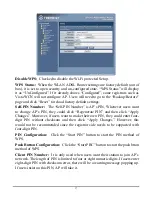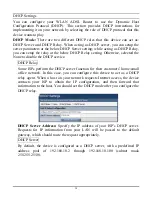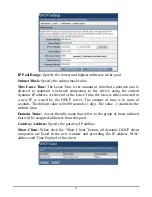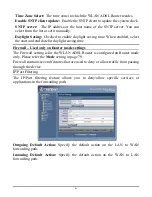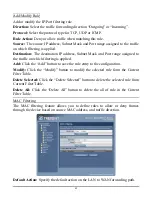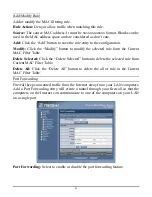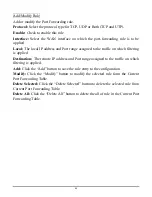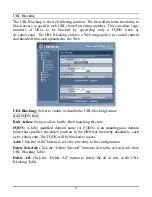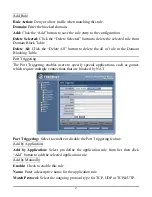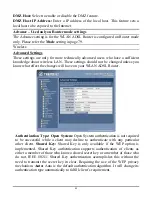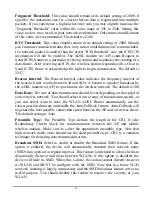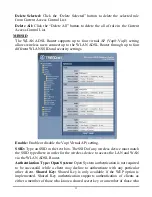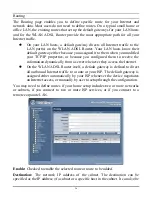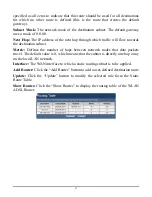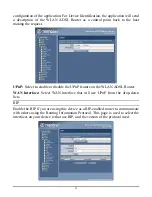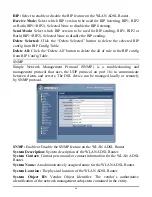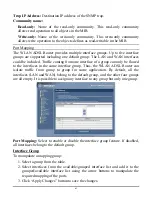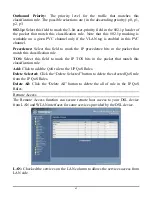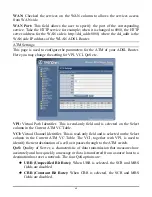
Fragment Threshold:
This value should remain at its default setting of 2000. It
specifies the maximum size for a packet before data is fragmented into multiple
packets. If you experience a high packet error rate, you may slightly increases the
“Fragment Threshold” value within the value range of 256 to 2346. Setting this
value too low may result in poor network performance. Only minor modifications
of this value are recommended. The default is 2346.
RTS Threshold:
This value should remain at its default setting of 2000. Should
you encounter inconsistent data flow, only minor modifications are recommended.
If a network packet is smaller than the preset “RTS threshold” size, the RTS/CTS
mechanism will not be enabled. The ADSL modem (or AP) sends Request to
Send (RTS) frames to a particular receiving station and negotiates the sending of a
data frame. After receiving an RTS, the wireless station responds with a Clear to
Send (CTS) frame to acknowledge the right to begin transmission. The default is
2347.
Beacon Interval:
The Beacon Interval value indicates the frequency interval of
the beacon. Enter a value between 20 and 1024. A beacon is a packet broadcast by
the ADSL modem (or AP) to synchronize the wireless network. The default is 100.
Data Rate:
The rate of data transmission should be set depending on the speed of
your wireless network. You should select from a range of transmission speeds, or
you can select Auto to have the WLAN ADSL Router automatically use the
fastest possible data rate and enable the Auto-Fallback feature. Auto-Fallback will
negotiate the best possible connection speed between the AP and a wireless client.
The default setting is Auto.
Preamble Type:
The Preamble Type defines the length of the CRC (Cyclic
Redundancy Check) block for communication between the AP and mobile
wireless stations. Make sure to select the appropriate preamble type. Note that
high network traffic areas should use the short preamble type. CRC is a common
technique for detecting data transmission errors.
Broadcast SSID:
Select to enable or disable the Broadcast SSID feature.
If this
option is enabled, the device will automatically transmit their network name
(SSID) into open air at regular interval. This feature is intended to allow clients to
dynamically discover and roam between WLANs; if this option is disabled, the
device will hide its SSID. When this is done, the station cannot directly discover
its WLAN and MUST be configure with the SSID. Note that in a home Wi-Fi
network, roaming is largely unnecessary and the SSID broadcast feature serves no
useful purpose. You should disable this feature to improve the security of your
WLAN.
50
Summary of Contents for TEW-436BRM
Page 1: ...i ...
Page 28: ...Click next button to save configuration and reboot the WLAN ADSL Router 22 ...
Page 91: ...85 ...


